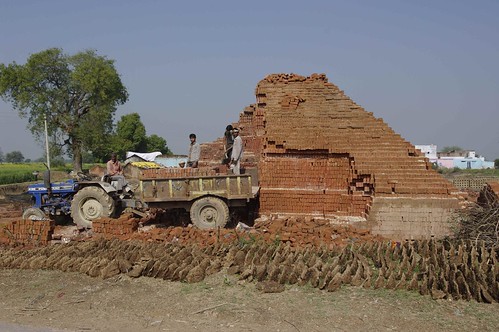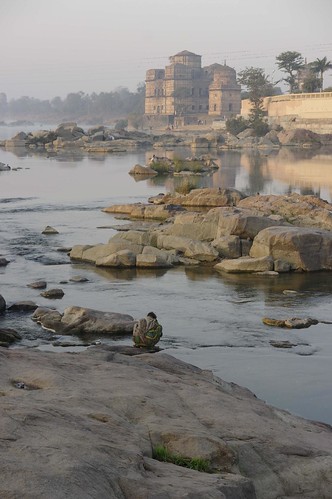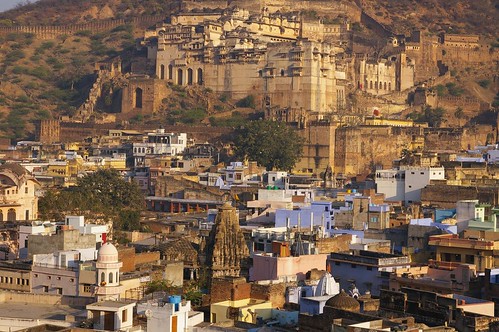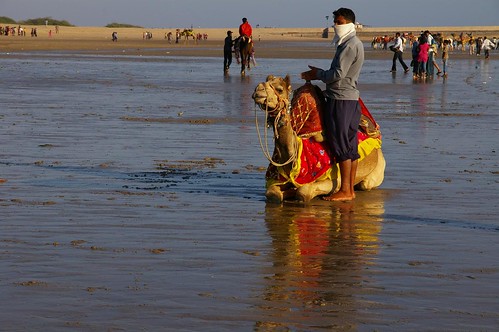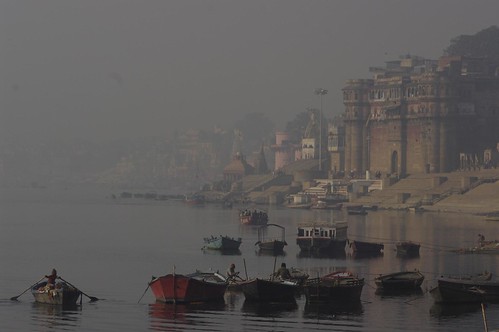There are two ways of writing travel. One is the destination guide. It's written to be useful to the average person. It has all the noteworthy monuments that everybody will be interested in.
I found it instructive to compare the Rough Guide with guides handed out by Indian tourist authorities in Madhya Pradesh and Uttar Pradesh. There's a distinct difference in their average reader.
There's another kind of travel writing and that's driven by special interests, by particularity, by the specific. For instance, simply because I'm a collector of fountain pens, I ended up seeing India through different eyes; a land where vintage fountain pens are still being made. I ended up visiting parts of Indian cities I would never have bothered with as a tourist, like the stationery shops of Nai Sarak in Delhi. While Chandni Chowk is full of tourists being pestered to buy pashminas and silver, in Nai Sarak I wandered round the shops looking for leather bound accounting books and Indian pens, and finding all kinds of ironmongery, university textbooks, confectionery - and a few ancient Mughal doorways and small, incense-laden shrines tucked away in back alleys. (I wrote about it on Fountain Pen Network.) I even ended up quoted in an article in Calcutta's Good News Tab when I met one of their journalists in the Calcutta Pen Hospital.
My father isn't a travel writer. He's a historian who specialises in maritime and industrial history and the history of East Anglia. For the last couple of years he's been working on the two volumes of Maritime Norfolk - Suffolk has had to wait... So whenever I travel, I keep an eye out for boat builders and repairs; coracles on the river at Hampi, dhows being built in Mandvi (maybe the last wooden ships to be built there), a man repairing a small river craft on the Varanasi ghats. I'm fascinated by the tall factory chimneys of the industrial region on the borders of Bihar and West Bengal, by rural brickworks at Sonagiri. And I've found that because I'm interested, people respond to me - from the brickmakers who waved at me and posed on their trailer for a photo, to the brassworkers of Chamba who let me sit in their shop for an hour, brought me tea, and showed me accreditations, prizes, and photos of their work for major temples - while managing, in between times, to get on with their work, beating vase necks on mandrels till they fitted the bowls that had already been made.
(I wonder with local history; is it history or is it travel writing? To some extent, when it focuses on the particularities of a place, what makes that place different, what distinguishes it, then it's travel writing, as well as history. And travel writing, while it's about the experience of one traveller, is also about that hinterland of history and myth that is bound up in making a place what it is.)
Then there's my decision to make kitchenware into my preferred souvenir. I've bought wooden forks and spoons in Sikkim, spatulas in the markets of Istanbul, a lovely gsaa in Rabat and a pestle and mortar in Meknes. No doubt if I visit Japan I'll come back with all kinds of sushi making gizmos and a set of lacquered bowls. (In Korea, monastic meals are even more structured than the tea ceremony; four bowls are laid out, filled, eaten from, and put away in their order, a fact I found out at the Korean vihara in Sarnath: its' called barugongyang.)
So that's not just two kinds of travel writing. It's two kinds of travelling. One prejudges what's going to be interesting; this monument, that landscape. The other says: let's set out and find interesting things. One looks for "typical India", the other for interesting India. One says: I'm an average person, let's go travelling. The other says: I have all kinds of odd interests and bits of knowledge, let's go and use those to get to know people and places. I find the first kind of travel is okay; but the second makes travelling marvellous.
I found it instructive to compare the Rough Guide with guides handed out by Indian tourist authorities in Madhya Pradesh and Uttar Pradesh. There's a distinct difference in their average reader.
- The average Rough Guide reader wants to see history, unspoilt nature, the picturesque.
- The average Indian tourist wants to see major monuments, sunrises and sunsets from the appropriate 'Sunset Point', and visit lots of temples with particularly interesting stories.
There's another kind of travel writing and that's driven by special interests, by particularity, by the specific. For instance, simply because I'm a collector of fountain pens, I ended up seeing India through different eyes; a land where vintage fountain pens are still being made. I ended up visiting parts of Indian cities I would never have bothered with as a tourist, like the stationery shops of Nai Sarak in Delhi. While Chandni Chowk is full of tourists being pestered to buy pashminas and silver, in Nai Sarak I wandered round the shops looking for leather bound accounting books and Indian pens, and finding all kinds of ironmongery, university textbooks, confectionery - and a few ancient Mughal doorways and small, incense-laden shrines tucked away in back alleys. (I wrote about it on Fountain Pen Network.) I even ended up quoted in an article in Calcutta's Good News Tab when I met one of their journalists in the Calcutta Pen Hospital.
My father isn't a travel writer. He's a historian who specialises in maritime and industrial history and the history of East Anglia. For the last couple of years he's been working on the two volumes of Maritime Norfolk - Suffolk has had to wait... So whenever I travel, I keep an eye out for boat builders and repairs; coracles on the river at Hampi, dhows being built in Mandvi (maybe the last wooden ships to be built there), a man repairing a small river craft on the Varanasi ghats. I'm fascinated by the tall factory chimneys of the industrial region on the borders of Bihar and West Bengal, by rural brickworks at Sonagiri. And I've found that because I'm interested, people respond to me - from the brickmakers who waved at me and posed on their trailer for a photo, to the brassworkers of Chamba who let me sit in their shop for an hour, brought me tea, and showed me accreditations, prizes, and photos of their work for major temples - while managing, in between times, to get on with their work, beating vase necks on mandrels till they fitted the bowls that had already been made.
(I wonder with local history; is it history or is it travel writing? To some extent, when it focuses on the particularities of a place, what makes that place different, what distinguishes it, then it's travel writing, as well as history. And travel writing, while it's about the experience of one traveller, is also about that hinterland of history and myth that is bound up in making a place what it is.)
Then there's my decision to make kitchenware into my preferred souvenir. I've bought wooden forks and spoons in Sikkim, spatulas in the markets of Istanbul, a lovely gsaa in Rabat and a pestle and mortar in Meknes. No doubt if I visit Japan I'll come back with all kinds of sushi making gizmos and a set of lacquered bowls. (In Korea, monastic meals are even more structured than the tea ceremony; four bowls are laid out, filled, eaten from, and put away in their order, a fact I found out at the Korean vihara in Sarnath: its' called barugongyang.)
So that's not just two kinds of travel writing. It's two kinds of travelling. One prejudges what's going to be interesting; this monument, that landscape. The other says: let's set out and find interesting things. One looks for "typical India", the other for interesting India. One says: I'm an average person, let's go travelling. The other says: I have all kinds of odd interests and bits of knowledge, let's go and use those to get to know people and places. I find the first kind of travel is okay; but the second makes travelling marvellous.
